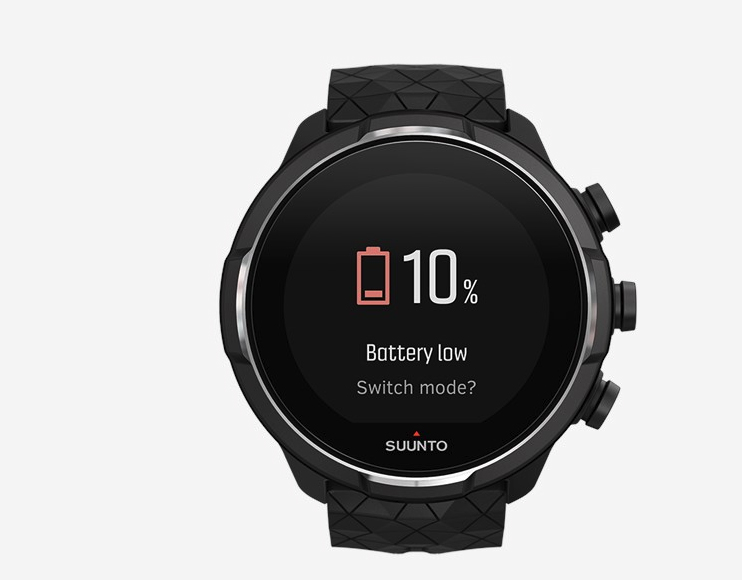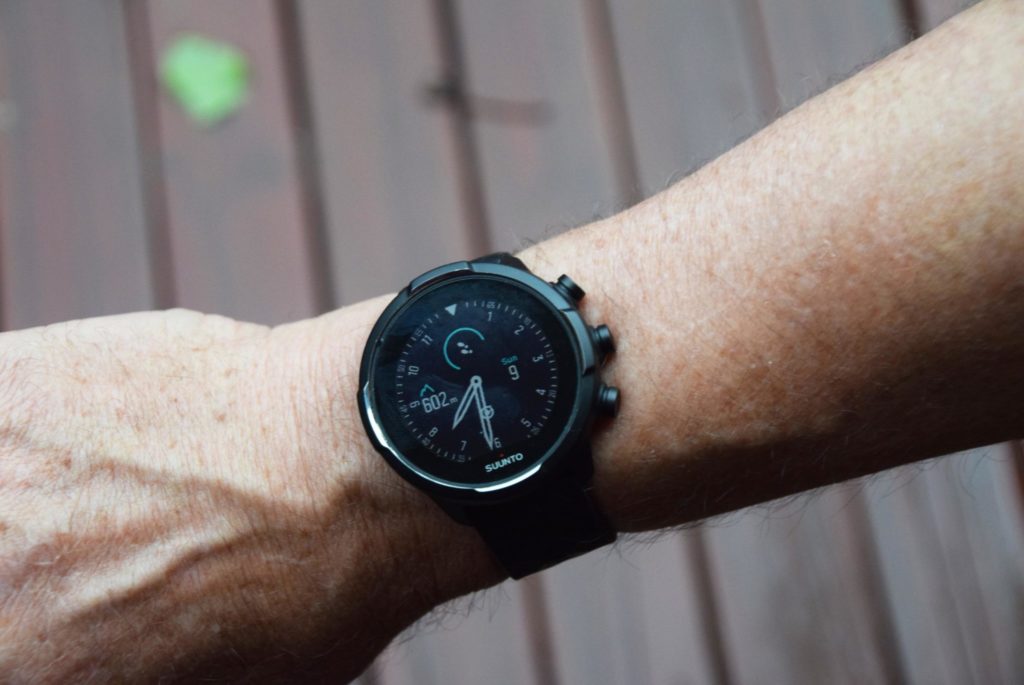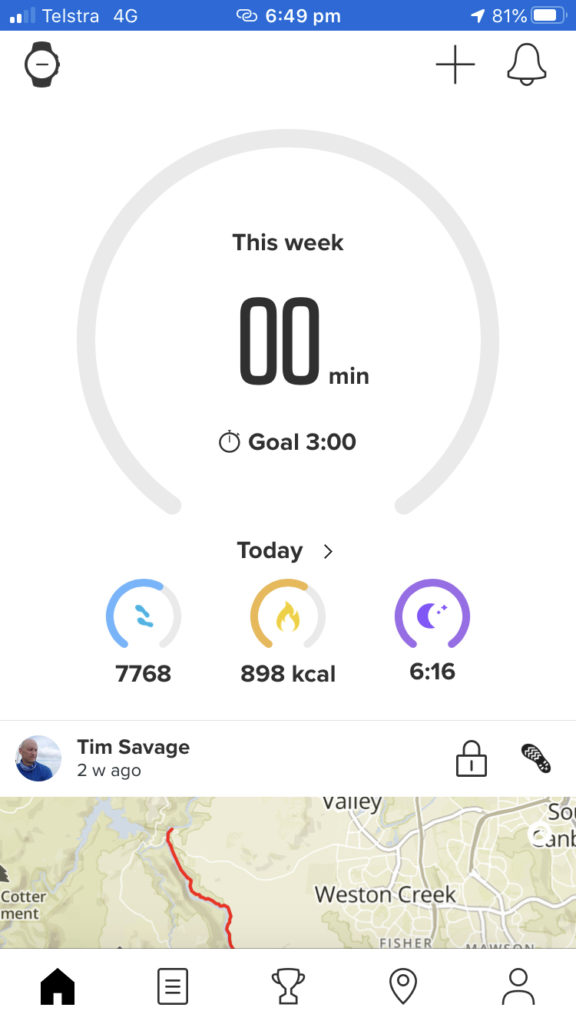Suunto 9 Baro Wrist Heart Rate GPS Watch-Black
Technology
Rating
| Rating: | 8.2 / 10 |
| Value for Money | 1.7 / 2 |
| Ease of Use | 1.6 / 2 |
| Weight | 1.4 / 2 |
| Durability | 1.7 / 2 |
| Versatility | 1.8 / 2 |
Suunto 9 Baro Wrist Heart Rate GPS Watch-Black Review
Where to Start
If you are in the market for an outdoor sports watch you will have realised by now this sector is dominated by the brands Suunto and Garmin. The range of models available from these two companies along with other brands will leave you with a very large and confusing choice to make. I’m a bit of a gear freak so when my Fitbit Charge 2 finally died I decided it was time for a dedicated outdoor watch so I took on the challenge of wading through all the options available; no small task.
I have used the Suunto Core model for a number of years and I also own a Suunto diving watch and have never had any issues in regard to reliability. I didn’t have any preconceived ideas about which brand to go for basing my choice on the features I was seeking.
My suggestion, that I apply to any piece of gear, is if you are looking at buying an outdoor watch as a first step you should work out what features are ‘must have deal breakers’ and what features can be put into the ‘nice to have’ category. This will help you to determine what model you should go for. In working through my list, I came up with the following criteria:
Must have deal breakers
- Battery life
- I regularly do long distance thru hikes in remote areas and will often go for 7+ days without access to a powerpoint. My watch needs to last as long as possible while still providing the information I need
- I need to be able to measure steps
- My GPS will tell me how many kilometres I have walked but I also want to know how many steps I have taken
- Vibrating alarm
- So I don’t annoy fellow hikers
- The ability to record exercises
- I need a fitness watch than can be set to different activities including hiking, cardio, weights etc
- Weather resistant
- Must be able to cope with being out in the open in extreme weather conditions including rain and cold
Nice to Haves
- Notifications option
- Ability to measure heart rate
- GPS function
Setting out this criteria this still leaves a large amount of options available but once I had worked out what options met the above criteria, it really came down to battery life. This was the feature that made me decide to purchase the Suunto 9 Baro. I have now spent just on three months wearing this watch, playing with all the features and testing out its capabilities and finally I feel I can do justice to this review.
Battery was the deciding criterion so it’s worth discussing this straight up. Suunto created this watch with Ultra Athletes in mind. It is designed to cope with 100 km multi day races and as such is designed to preserve power in a number of different ways. Firstly this is achieved by limiting the number of functions on this watch. It doesn’t play music and it doesn’t have a lot of the bells and whistles some other watches have but in all honesty, that’s fine by me.
In addition you have the ability to put this watch into power saving mode which cuts of communications with your mobile phone while storing the data on the watch. I found that in power saving mode, I managed to get 12.5 days battery life which includes the use of the vibrating alarm on a daily basis. This is more than I have had on any rechargeable watch. The real power hog with this watch are the notifications and when I have all features turned on and log a number of exercises, I find I get around six days of power which is still pretty impressive.
Charging is through the means of a dedicated USB cable that plugs into the mains and will also charge off a battery pack. I found that when charging from 9% full it charged through a battery pack to 95% in around two hours but the last 5% took another hour. This has always been an issue for me in the past with my Fitbit not charging with a battery charger. Charging through mains power takes around two hours as well.
Another feature this watch has is that it uses the GPS (which includes GLONASS, GALILEO, and QZSS systems as well as GPS). With this GPS recording, Baro has what is called Intelligent Battery Mode that will provide highly accurate recording for up to 120 hours of use with the GPS active. I am using the GPS logging function, I will put it into its most conservative mode but given I always carry a standalone GPS this is not something I will use but it’s there just in case.
Other features include are:
- Sleep logging
- Digital compass
- Calories burnt
- Activity tracking for a number of different exercises
- Altimeter
- Sunrise and sunset
- Heart rate either by wrist or with the optional chest strap
- Ability to use in the water (waterproof to 100 metres which means for swimming use only and not diving)
- And many others
Even though this watch is sold as a stripped back outdoor watch for serious racers, I like it from a hiking perspective as well finding that the features suit me well. Having the ability to play music (which a number of other watches offer) is not something I particularly want on a sports watch.
Appearance wise this watch is not small at 50 mm diameter and 16 mm thick. It weighs in at 81 grams which while not particularly heavy still means you can feel when its on (and that’s me as a large male saying that). Suunto produces a range of other watches with different features so if you want something lighter and smaller, the Suunto Core is physically around the same size but weighs in at 64 grams but in this case you will lose a lot of the features. The Baro I purchased is called the ‘Black’ which is at it sounds – black band and black watch. However there are a number of other cosmetic options you can purchase to suit your individual style. Please note that there is a Baro 9 model that has less features so when looking at price, make sure you are looking at the fully spec’d model.
One thing about this watch size is that the buttons which are large and easy to use and located on the right hand side, tend to dig in if you wear this on the left wrist which is what most right handed people will do. I wearing this watch on my dominant right hand and it’s much more comfortable but as a result, I do find I knock the watch every so often.
Being a stereotypical male, I read the basic setup options when I purchased this watch but otherwise I just refer to the instructions as I need when I get stuck. The features on this watch are operated by the three buttons on the right hand side of the watch and by means of the touch screen. It’s pretty simple to work out and it didn’t take long for it to become second nature. I find that setting my alarm is the main reason I use or scroll through the various screens. Occasionally I will change the watch face but that depends on what I am doing at the time because each watch face has its own advantages.
There are some of annoying features for me. The first is that while this watch has exercise logging you need to activate it manually – having worn a Fitbit for a number of years that automatically detects exercise, I sometime just forget. The bonus of a manually started exercise recording is that if you don’t want to use it, you don’t have to.
The second is the phone app is miles behind manufacturers such as Fitbit. It’s not so much the features of this app but rather the way it is set out and operates that is a bit clunky but this is a minor annoyance. Suunto allows you to connect this watch to a number of other third party apps such as Strava or Map My Run which if you are into running may be a consideration however I just ignored this feature as it’s not something I would use.
The last thing that annoys me is that I don’t like being told I have a fitness age of 79. On the whole this is based around my current weight which is the heaviest I have ever been. While I am overweight, I am also carrying a lot of muscle. It should be noted however that any other fitness watches work on the same algorithms and don’t take into account muscle mass.
Last but not least the vibrating alarm is a bit less aggressive than my old Fitbit so initially I was sleeping through. Having said that my Fitbit used to wake my wife up which defeated the point of having a silent alarm when the bed vibrated. I am now used t0 the lighter buzz and I wake up when I needed.
I have now used the Suunto Baro 9 for just on 4 years and can now use the features without having to think about it. This watch does as advertised and while its not as feature rich as some others on the market, including other models from Suunto, it has the features I want, is solid and robust, and dominates where battery life is concerned – this was the key seller for me and well ahead of any other model within a comparable price range ($899 AUD when I purchased). Please note that this model is now in clearance mode and you can purchase it for much cheaper than the RRP at around half the price I paid for this model in 2019!
So if you are doing a big race or doing remote hiking and need battery reliability this is the watch for you.
Follow Up: One thing that has been a pleasant surprise is that Suunto doesn’t sit on its laurels and updates the software for both the App and the watch on a semi regular basis to improve the user experience.
This model has been superseded but as such it can be found at a very sharp price and is well worth purchasing
We like
- Class leading battery life that will last me for around 12 days
- Looks good, for a large sports watch
- Will charge off a battery pack as well as from mains power
We don't like
- While being marginally lighter in weight than other comparable options on the market, you will definitely know that you’re wearing it
- The large buttons, while very easy to use, are a bit uncomfortable on my left wrist so I have swapped to using this unit on my dominant right hand
- The exercise mode must be turned on manually rather than automatically recording. Having said that footsteps are automatically recorded

Suunto 9 Baro Black showing one of the watch face choices

Suunto 9 Baro heart beat record screen

Suunto 9 Baro battery mode warning. This gives you time to change the battery setting if the battery is running low

Suunto 9 Baro on a large male wrist. With this watch face, the altitude is on the left and the step counter is at the top

Front screen of the phone app showing daily steps, calorie usage and sleep. Exercise is showing as 0 hours as the week starts on Sunday and I didn’t log my morning walk as an exercise

information screen from the Tibrogargan Circuit showing the change in altitude across the hike, the hike time, average speed and average heart rate

Tibrogargan Circuit showing the heart rate across the duration of the hike including the various heart rate zones

Tibrogargan Circuit show the GPS logged map starting at the car park, doing a loop around Mount Tibrogargan and returning to the car park
Best Uses
A durable long lasting sports watch for those who place a premium on battery life, want good fitness features and who also want the ability to use navigation features
Investment
AUD $420.00 RRP
- Please note that this model has been superseded but as a result the pricing is half what I paid for mine!
Buy one
You can purchase the Suunto 9 Baro Wrist Heart Rate GPS Watch-Black from Amazon Australia
As an Amazon Associate we earn a small commission from qualifying purchases but please note that our affiliations do not influence, in any way, the independence of our gear reviews. If we don’t like something, we’ll tell you
Other Versions
- The Suunto 9 Baro comes in a wide range of cosmetically different models
- Suunto also produce a large range of other sports watch models each with their own unique features
Disclaimer
This review was done with product purchased from a retailer by Australian Hiker
Last updated
9/12/2023